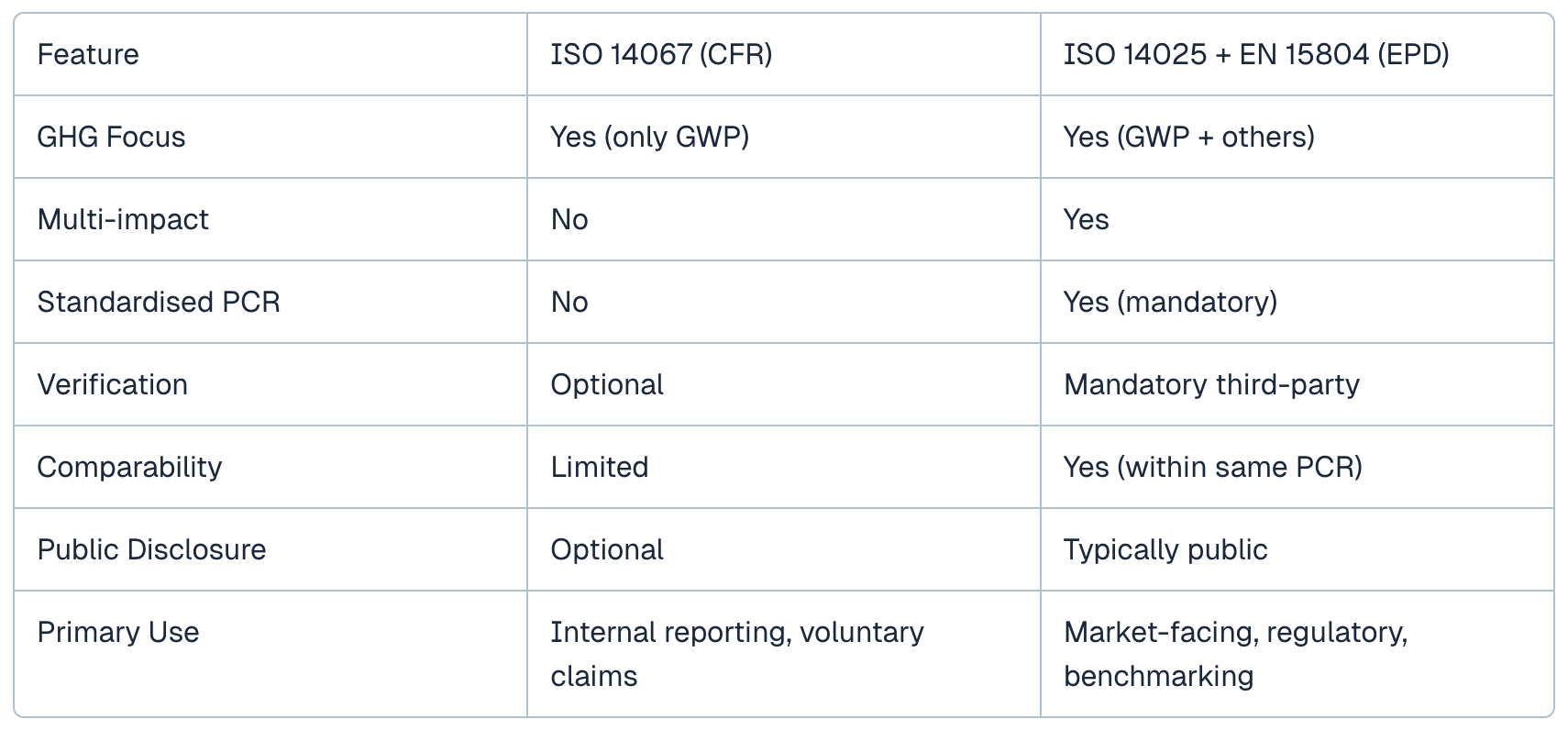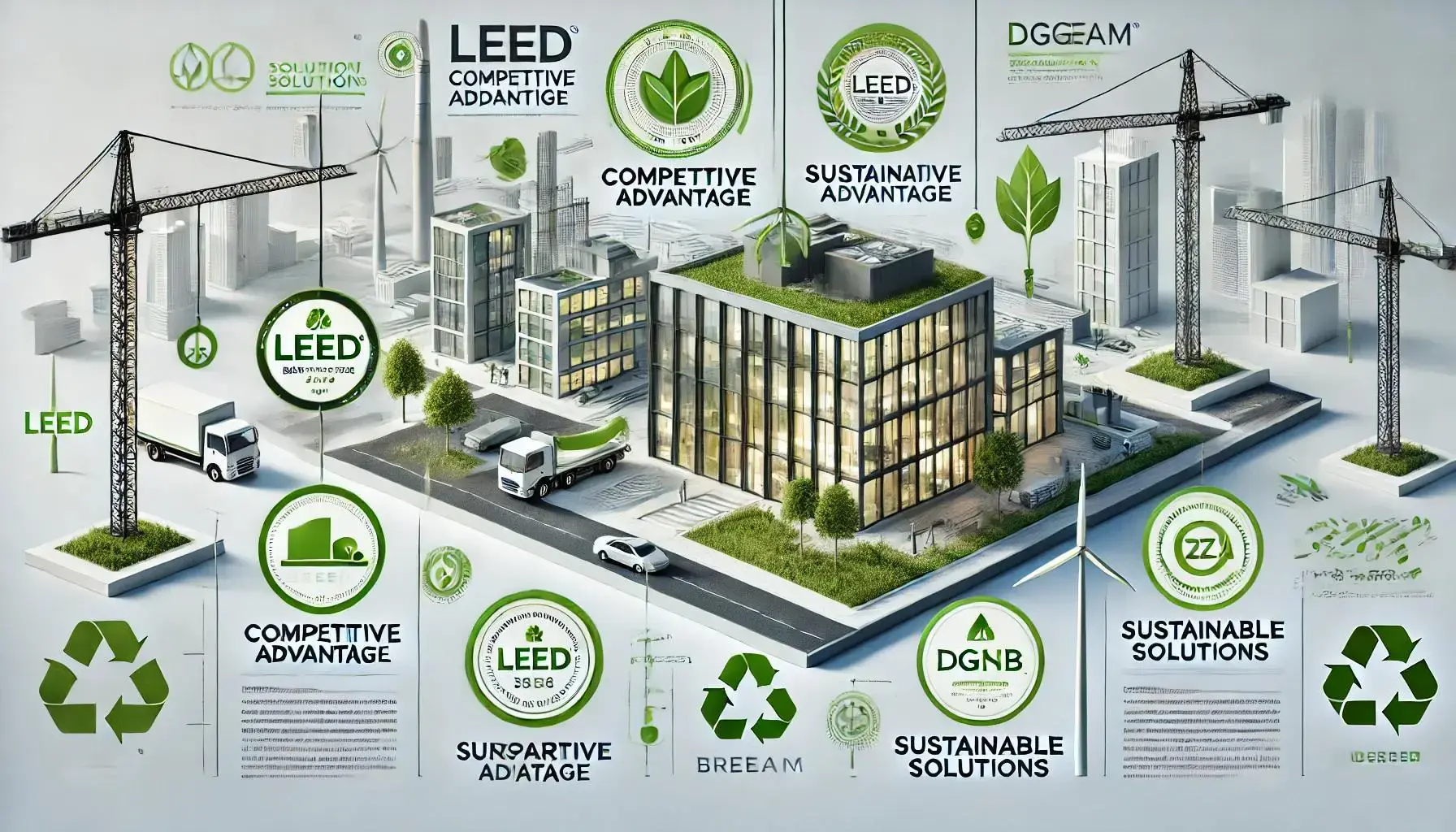1. Governing Standards and Scope
Carbon Footprint Reports – ISO 14067
ISO 14067:2018 specifies principles, requirements and guidelines for the quantification and reporting of product's carbon footprint (PCF). The standard focuses solely on climate change impacts, expressed as Global Warming Potential (GWP) in CO₂-equivalents.
Single-indicator focus: Only GHG emissions are considered.
Optional life cycle stages: Scope can range from cradle-to-gate to cradle-to-grave, depending on the intended application.
Primary purpose: Often used for internal carbon management, voluntary disclosures or carbon offsetting claims.
Environmental Product Declarations – ISO 14025 + EN 15804
EPDs are governed by ISO 14025, which provides the framework for Type III environmental declarations—multi-impact, verified, and comparable environmental profiles. For construction products in Europe, and increasingly in Australia, EN 15804 serves as the core PCR that standardises life cycle assessment (LCA) rules, scenarios and reporting formats.
Multi-indicator approach: Includes GWP but also acidification, eutrophication, ozone depletion, resource use and more.
Standardised life cycle modules: Modules A1–A3 (product stage) are mandatory; other stages (A4–C4, D) are optional or context-dependent.
Primary purpose: Used for product comparison, building-level LCA, and regulatory or market transparency.

2. Product Category Rules (PCRs)
Carbon Footprint Reports – ISO 14067
Does not rely on PCRs in the traditional sense.
Requires transparency about assumptions, data sources, and allocation methods.
Offers flexibility in system boundaries, but this limits comparability across different products.
EPDs – ISO 14025 / EN 15804
Must comply with Product Category Rules (PCRs), which define how the LCA should be carried out for a specific product group.
EN 15804 functions as the core PCR for construction products, ensuring consistency across EPDs.
PCRs are developed under ISO 14025 and typically involve public consultation and approval by a recognised EPD programme operator.
3. Review and Verification Requirements
Carbon Footprint Reports – ISO 14067
Independent review is optional, unless the report is used for public claims or third-party communications.
Review can be internal or external, and focuses on checking methodological rigour and data quality.
EPDs – ISO 14025 / EN 15804
Third-party verification is mandatory before an EPD can be published.
Verifiers must be independent and qualified in LCA methodology, PCR interpretation and relevant product sectors.
Verification may occur at the EPD level (for each individual report) or process level (for organisations with in-house LCA systems).

4. Comparability of Results
Carbon Footprint Reports
Comparability between CFRs is limited due to varying system boundaries, assumptions, and data sources.
Without harmonised PCRs, comparing carbon footprints between different products or suppliers is generally not recommended.
EPDs
Designed to support comparability between products within the same category, provided:
They follow the same PCR.
Include the same life cycle stages (e.g. A1–A3).
Use consistent impact assessment methods.
Even with EPDs, comparisons should be made carefully and only where methodological alignment is confirmed.
5. Summary Table

Conclusion
While carbon footprint reports and EPDs both contribute to improved carbon awareness, they serve different purposes and follow different levels of rigour. CFRs offer flexibility and are often used for internal carbon tracking or voluntary claims. EPDs, by contrast, provide a more structured, independently verified approach suitable for product comparison, regulatory submissions, and use in tools like building LCAs and carbon benchmarking systems.
For those working in Australia’s construction and manufacturing sectors—especially where alignment with Green Star, IS Rating or government procurement requirements is expected—understanding these distinctions is crucial to selecting the right tool and interpreting carbon data responsibly.



